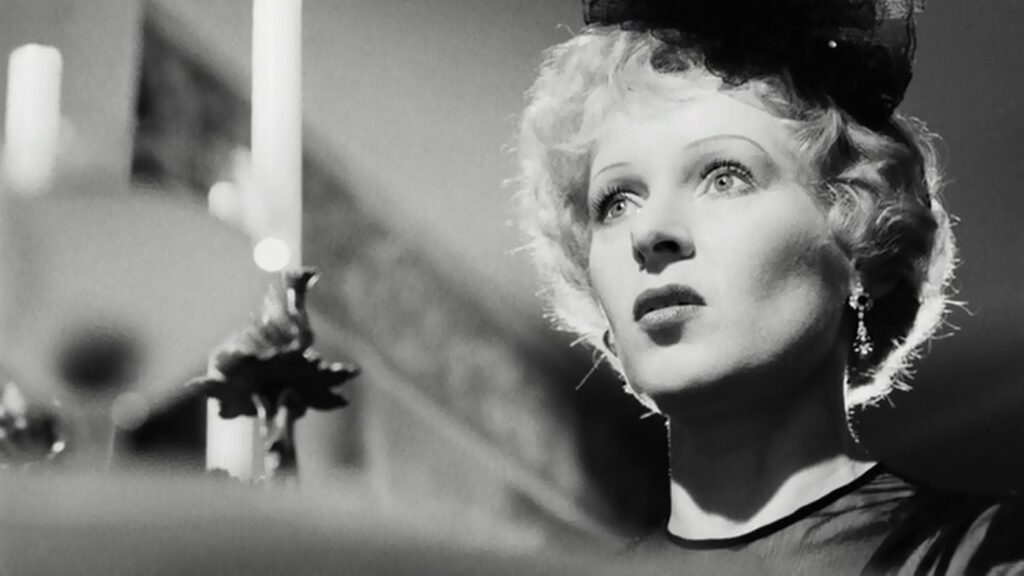
Veronika Voss
1982, directed by Rainer Werner Fassbinder
About an hour and 22 minutes into Veronika Voss, while Henriette visits the clinic posing as a wealthy housewife, an American G.I. under the care of Dr. Katz quietly opens a cabinet to get some morphine ampules. This detail passes unremarkably, barely disturbing the flow of the plot, but it reveals something astounding. The doctor keeps the source of her power – a criminal power that turns people into somnambulists – in a cabinet. This point must sound familiar to anyone with a basic knowledge of German film history. Dr. Katz is none other than a contemporary incarnation of Dr. Caligari.
This puts the strange decor of Dr. Katz’ clinic in a new light. Like the Expressionist sets of The Cabinet of Dr. Caligari, its blindingly white rooms look thoroughly artificial. Not only are the walls, floors, and ceilings white, but also the telephones, appliances, doors, and furniture. Even the leaves of her plants are bleached. After a while the plot too begins to mimic the famous silent film when Robert leads the police in and points an accusing finger at Dr. Katz, frantically insisting that she’s a murderer, just like Francis does to the doctor in Caligari. As the movie draws to its close, Dr. Katz hosts a grand party in Veronika’s house, bringing all the major characters together except for the murdered Henriette, much like the asylum at the end of Caligari where the murdered Alan is conspicuously absent.
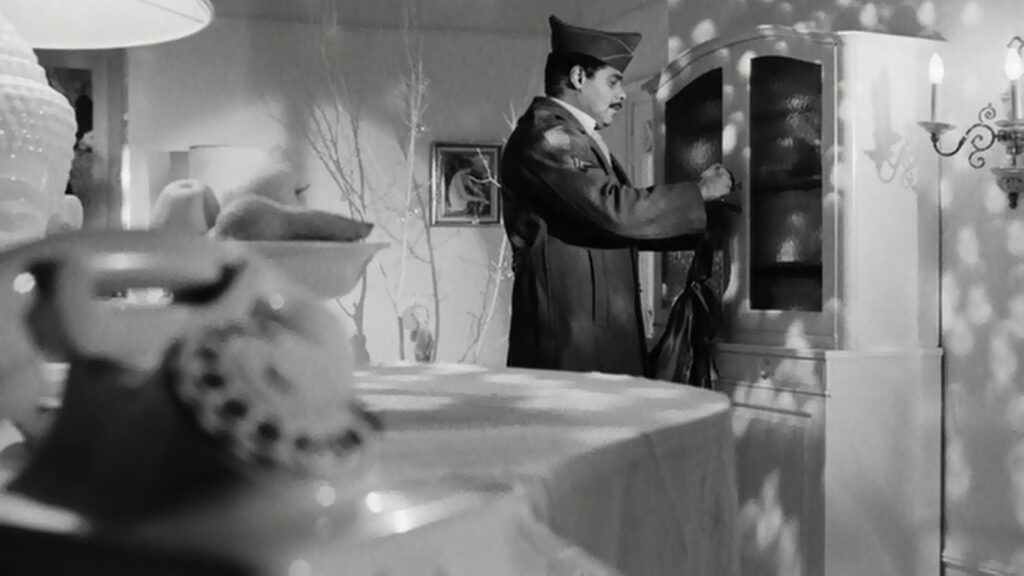
To be more precise, Dr. Katz is an inversion of Dr. Caligari. In Francis’ telling the doctor was sinister, but he proves benign at the end, whereas Dr. Katz is a respected member of society who eases people’s suffering but proves totally malign. Dr. Caligari’s first victim was a government officer, the town clerk who had treated him rudely, but Dr. Katz enjoys a corrupt partnership with the health minister Dr. Edel.
Chandeliers and high contrast lighting give Veronika’s grand party a fantastic quality, and Veronika announces there that she’s leaving for Hollywood. Guests from all sides of her life join in “Memories are Made of This” as if the party itself is nothing but a rush of memories. The scene is intercut with her suicide, locked in a tiny room by the cruel doctor who will benefit handsomely from her death. We know that Dr. Katz has promised her a party, but whether it happens in reality or in Veronika’s drugged and dying mind is ambiguous. On this point too the movie inverts Caligari, which brings the patient to reality at the end. In any case the final scene, where Robert Krohn spies Dr. Katz and Josefa having Dr. Edel over for lunch in Veronika’s house, is all too real.
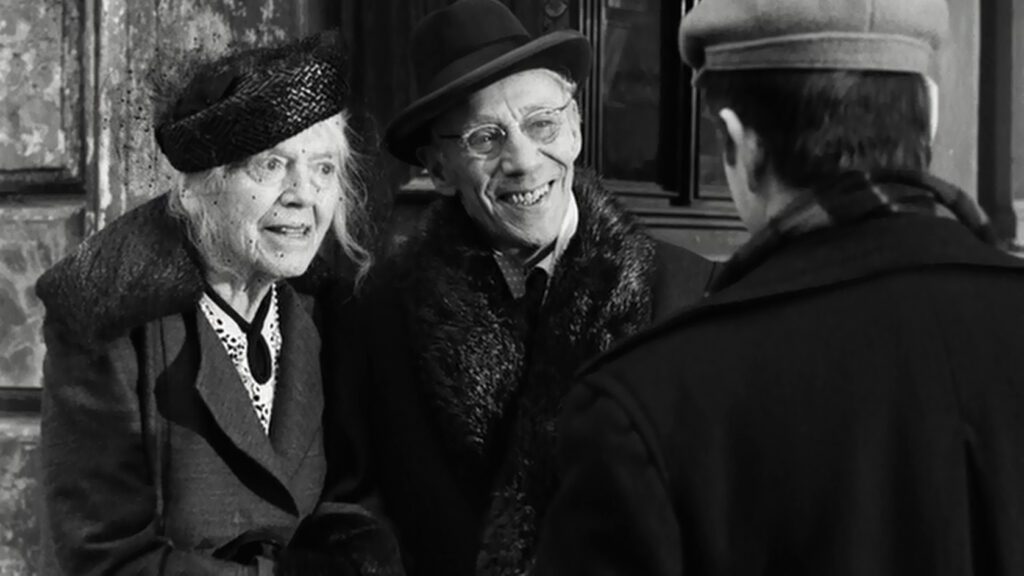
These allusions to The Cabinet of Dr. Caligari may be subtle, but the movie makes no secret about reaching back to Germany’s cinematic past. It begins with Veronika watching a film at the Bavaria Film Studios in the Perlacher Forest on the southeast side of Munich. Veronika is an aging movie star whose career peaked during World War II, and she longs for the lost glory of her stardom. The film is set in 1955, but all the settings and props look pre-war. “Memories are Made of This” stirs ghosts of decades past, and when Dr. Katz’ elderly patient Jan Treibel shows Henriette the number from Treblinka tattooed on his arm, the story awakens Germany’s own monstrous past.
Veronika Voss is the conclusion of Fassbinder’s BRD (Bundesrepublik Deutschland) Trilogy, so it’s expected that it will speak to German history. The opening titles drift diagonally across the screen opposite to their shadows, aligning for a moment like past and present coming into focus. The story will unearth painful memories, reminding us that the demons of Germany’s past live on. When Dr. Katz cuts off Treibel’s medication after gaining possession of the elderly couple’s house and antiques, we should understand that she’s effectively continuing the work of the Holocaust, motivated not by anti-semitism but by greed. What commentators like Siegfried Kracauer saw in Caligari as a foreshadowing of fascism has been transformed, since the war, into an inhuman capitalism that puts money over human decency.
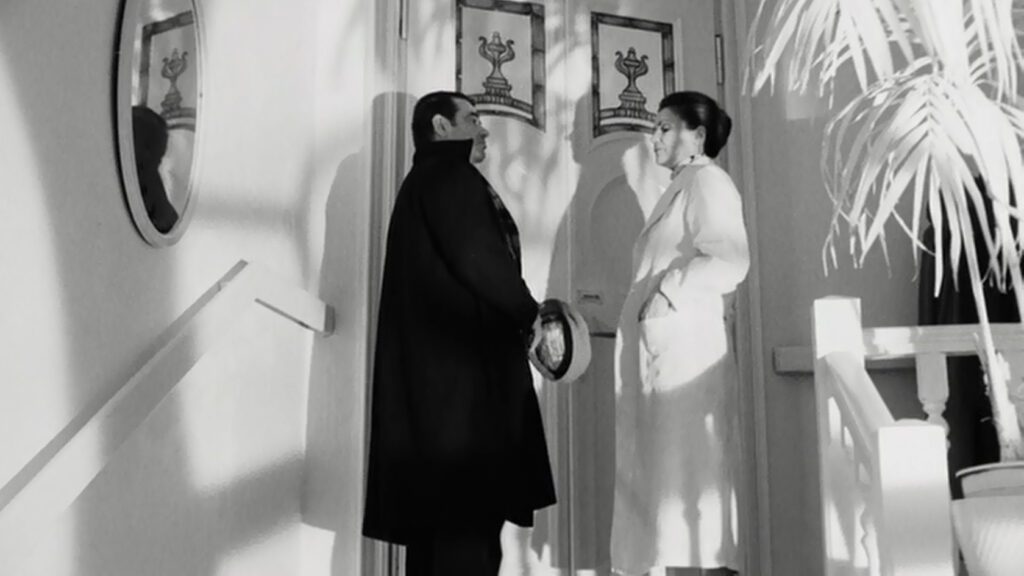
Veronika’s dream of Hollywood hints at the Americanization of post-war Germany, but in a broader sense it points to the homogenization of culture in a globalizing world. In Veronika Voss‘s Germany, the mania of fascism is not banished but rather supplanted by the dull exploitations of a world ruled by commerce. We don’t need to read any hyperbole into it – the movie’s not equating contemporary West Germany with the Third Reich, but simply asking us to question any optimistic assumptions about the foundations of the “new” postwar nation.
The English title omits half of the German title, Die Sehnsucht der Veronika Voss. “Sehnsucht” is an intense longing. Veronika longs for her past glory, but that longing has been superseded by a more prosaic longing for morphine, which is a shorthand for longing itself, because it produces desire in its most distilled form. Longing is nearly universal to the human condition, but Fassbinder must have recognized how particularly descriptive it is of the German character. In Beethoven’s music and Wagner’s operas there’s a sustained longing for tonic resolution, and Faust is driven by a longing for youth and knowledge. Hitler exploited this sense of longing, promising the German people a vision of nationhood whose appeal differed from the ideological, revolutionary, or religious promises of other modern despots. Dr. Katz likewise exploits her patients’ yearnings, and her greed is also a form of yearning. Robert yearns for Veronika, while Henriette alone seems immune to this sickness. Her love for Robert is genuine and selfless, but it leads her to death, as if she doesn’t fit in a society where longing is the common currency.
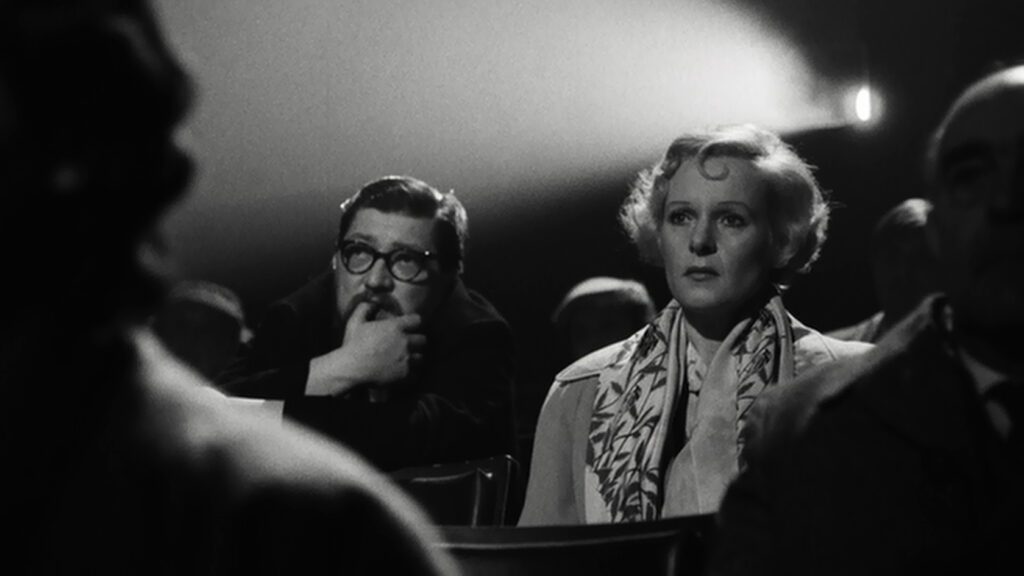
Veronika personifies this aimless yearning that defines the German character, and Fassbinder seems to sympathize closely with her. We can only speculate whether it’s coincidental that he too overdosed on drugs within four months of the film’s release, but the initial rhyming of their names is more certain – Veronika and Werner, Voss and Fass (in German the respectively hard and soft Vs match the W and F). In the opening Fassbinder sits behind Veronika in the cinema, watching over her shoulder like a guardian angel. Robert Krohn takes Fassbinder’s exact place in a match cut to the forest outside, and henceforth he will take over as her guardian angel. As if stressing this point, the film makes a few allusions to angels: Treibel calls Henriette an angel; the Treibels live on Gabrielstraße; and Veronika has statues of angels at her home.
Fassbinder must have felt protective toward his protagonist, and the film compares her to Christ. She dies on Good Friday with church bells ringing outside and “High on a Hilltop” on the radio, as if she’s up on a version of Calvary. The fact that her two caretakers, Dr. Katz and her assistant, are named Marianne and Josefa – Mary and Joseph – is not a sacrilegious provocation; rather it reflects the perversity of a modern economy that twists even the parental functions of care and protection into a pursuit of profit.
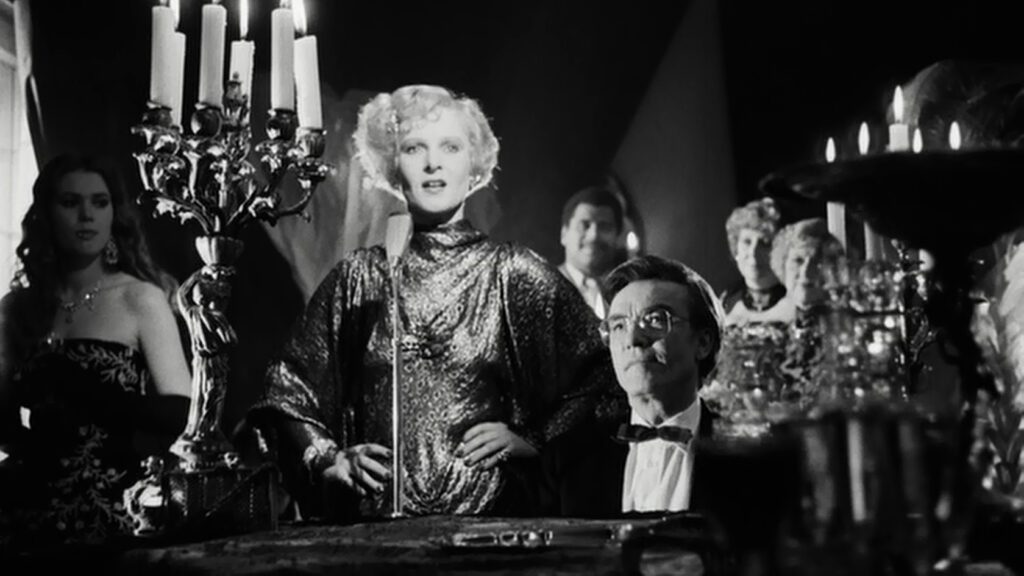
The ending is downbeat, with Henriette and Veronika both dead and no avenue open for Robert to seek justice. Upon finding Dr. Katz dining in Veronika’s sunroom with Josefa and Dr. Edel, Robert removes his mourning armband, tosses it contemptuously on Edel’s windshield, and tells a taxi driver to take him to the 1860 Stadium. 1860 München is a professional soccer club, but its name points to a time shortly before Germany became a unified nation. Robert is plainly fed up, and it’s as if he wishes to return to a time before Germany existed. Whether the movie itself expresses such a wish is left open, but what should be clear is that Veronika Voss is more than a mere complaint about the state of Germany in 1982. It says that we must not deceive ourselves with the comforting thought that the past is behind us. Rather the movie helps us to see and to feel that Germany’s inhuman past is still alive in our present time.
CONNECTIONS:
The Cabinet of Dr. Caligari – Villainous psychiatrist (Dr. Caligari/Dr. Katz); doctor’s power stored in a cabinet; artificial white settings; sleepwalkers/morphine addicts; accusation scene; all major characters except murder victim gathered in a room
Sunrise – Tram station in a forest
Sunset Boulevard – Aging actress hoping to restore her past glory
The Night of the Hunter – Use of silent film devices to conjure a distant historical past
Seconds – Murderous businesspersons selling impossible hopes in exchange for victims’ estates
Heart of Glass – Allusions to Caligari; power stored in a cabinet
Nostalghia – Accumulation of allusions to angels
Mulholland Drive – Smiling elderly couple who represents something horrifying